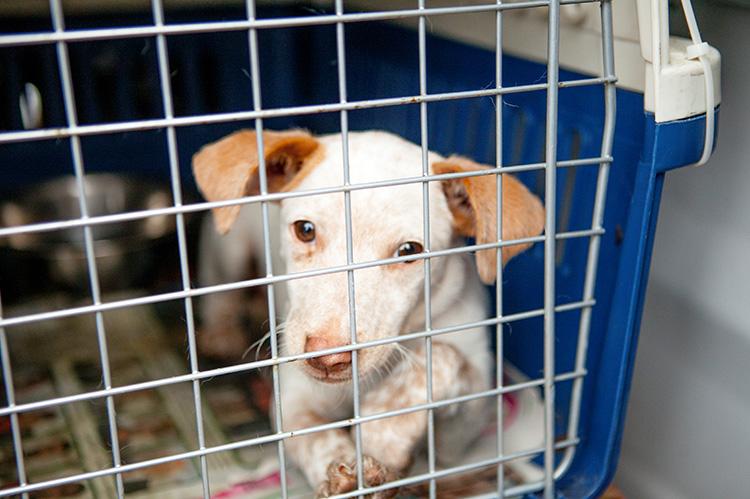Evacuating With Pets During an Emergency or Natural Disaster

If you’re ever in an emergency situation with your pets, the key is to remain as calm as possible. Staying calm not only will help you think clearly about the actions you must take, but it will also help your pets to stay calm. Pets react to their humans’ anxiety levels. What to do next depends on the situation. Here are some general tips for evacuating with pets during an emergency or a natural disaster.
Evacuating with pets
If local officials indicate that a major threat will impact your area and evacuation is likely, you’ll want to ensure that you have plenty of time to find and secure your pets. So don’t wait until the last minute to start the evacuation process.
If you must urgently evacuate but can't find your pet in your home, leave an escape route through an open window or door, so your pet won’t be trapped. When there is a fire or flood, pets have a higher chance of survival if they have a way out of an enclosed space.
If your pets are outdoors and there's potential that you'll need to evacuate, bring them inside and put them in an enclosed room so that, if necessary, you can easily crate them for evacuation. Keep leashes handy to get pets out of their crates safely for bathroom stops.
Be aware that your pets’ behavior during and after an emergency evacuation might be different from their normal behavior. Pets might become highly stressed as the danger nears, so be extra cautious when handling them because they might be scared or try to escape or bite.
Then, during evacuation, keep an eye out for hazards such as chemicals on the ground or in floodwater, debris such as broken glass and sharp metal, hot surfaces, and downed electrical wires.
Finding pet-friendly emergency shelter
If you need to find emergency shelter during a disaster, call your local emergency information number (211 or 511) to identify the closest pet-friendly disaster shelter or facility where you can take your pet for temporary care until you can recover from the disaster. Organizations such as the Red Cross or local animal welfare groups will often provide support to residents displaced during a disaster, and local groups might also be able to offer temporary foster homes for displaced pets.
It's best to have a plan for your pet after five days in a shelter because most shelters are only set up for temporary support. A neighbor, friend, or family member are possibilities for additional temporary placement. You should also contact local rescue groups, which might be able to offer assistance.
Finding out what emergency support is available for pets in your area will help you to ensure that, if a disaster occurs, your pet is safe until you can get back on your feet.
Click here for a printable checklist of pet emergency supplies.
Click here for a printable checklist of what to include in a pet first-aid kit.